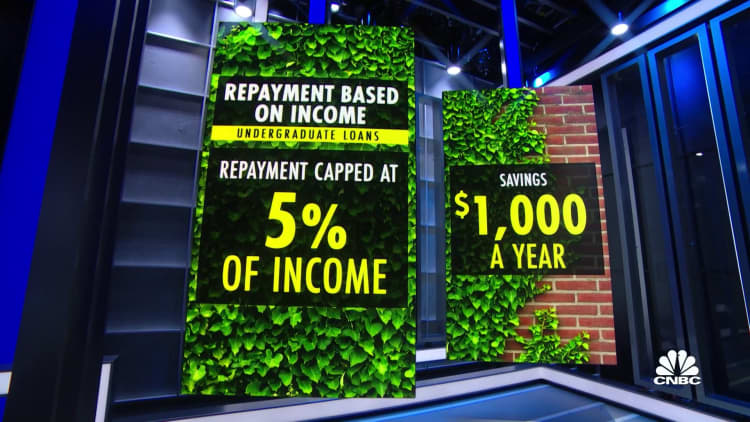

Non-completers face heavier financial burdens
For students who start college and don't finish, managing education loans without the benefit of a degree — and the higher earning potential that goes with it — is especially difficult.
The default rate among borrowers who leave with student debt but no degree is three times higher than the rate for borrowers who have a diploma.
More from Personal Finance:
Inflation is making college even more expensive
Do you make too much for student loan forgiveness?
Student loan forgiveness applications could open within weeks
Roughly 39 million Americans have attended college at some point but have not earned a degree, according to a report by the National Student Clearinghouse Research Center.
Although college completion rates are on the rise, only about 63% of students enrolled in four-year institutions graduate within six years, the National Center for Education Statistics also found.
Among students who leave college, most said it was due to a loss of motivation or a life change, according to a separate report by education lender Sallie Mae. Others cite financial concerns, followed by mental health challenges.
"Many times, non-completers are first-generation college students from underserved communities," said Rick Castellano, Sallie Mae's spokesman.
Those who finish college are more likely to grow up in households with higher income levels and have at least one parent who earned a college degree, the report found. Completers also come more prepared when it comes to paying for college: 42% said they had a plan for how to pay for every year of college before they enrolled, while only 26% of non-completers could say the same. (Other studies show students are more likely to enroll in college when they are aware of the financial resources available to help them pay for it.) "Having a plan to pay for college or having those conversations earlier goes a long way," Castellano said.
Forgiveness is not 'addressing the bigger problem'
On the heels of Biden's historic student loan forgiveness announcement, colleges still face a larger affordability crisis, experts say. "That's what I worry about," said Hafeez Lakhani, the founder and president of education-focused Lakhani Coaching in New York. "When I heard about loan forgiveness, I thought it's misdirected." "You are not addressing the bigger problem standing in front of us which is the enrollment decline," he said. "The enrollment decline is absolutely linked to affordability." Average tuition and fees edged higher again in the 2021-2022 academic year, reaching $10,740 for in-state students at four-year public schools, according to the College Board, which tracks trends in college pricing and student aid. Average tuition and fees at four-year private institutions hit $38,070. This year, some colleges are hiking tuition as much as 5%, citing inflation and other rising costs. Most students must borrow to cover at least some of the tab. More than 40 million Americans now owe a collective $1.7 trillion in student debt, a balance that has tripled since the Great Recession.
Amid the rising cost of tuition, growing student loan burden and a heightened demand for workers, students like Hamade are increasingly choosing alternative career-connected pathways over four-year colleges, studies show. Still, studies show that college graduates will earn nearly $1 million more over the course of their careers and many continue to believe that getting a degree is worth it in the end. If he could do it all over again, Hamade said he would try to get his diploma but do it less expensively. "If I was 18 right now, I would go to community college and get an undergraduate degree by the cheapest means possible," Hamade said. "I still see that as a way for people to move forward," he added.
#student #loan #forgiveness #means #borrowers #graduated
https://www.globalcourant.com/what-student-loan-forgiveness-means-for-borrowers-who-never-graduated/?feed_id=21856&_unique_id=631d13a10d100